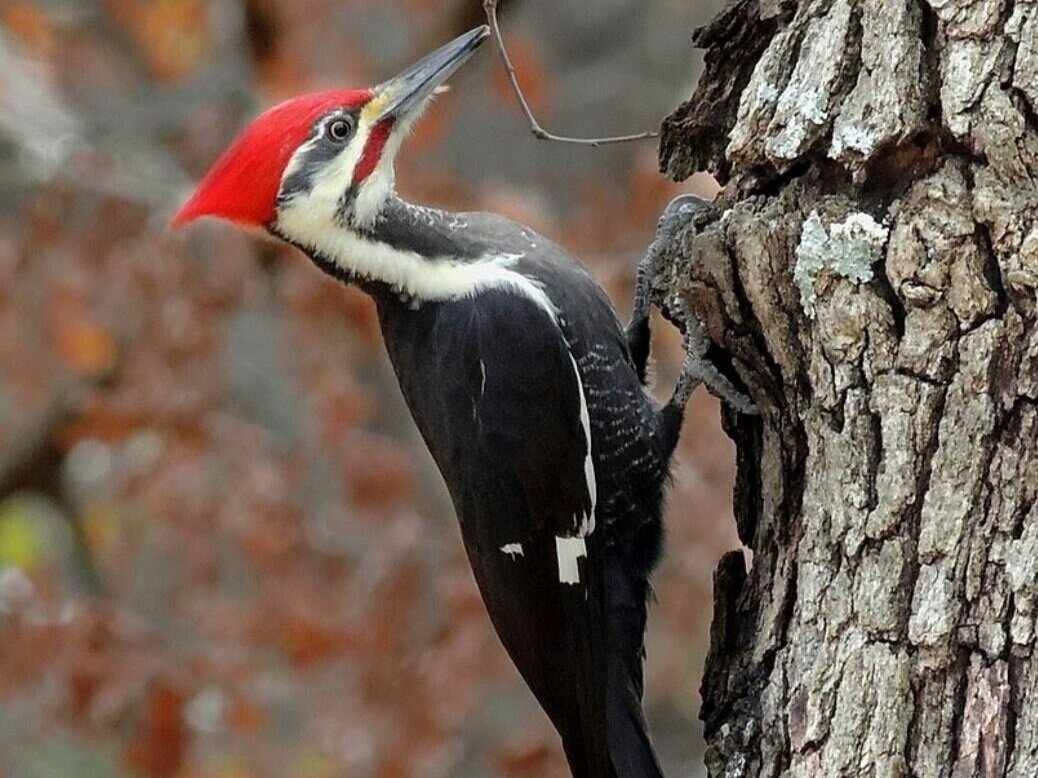Woodpeckers are categorized as their name suggests, about 180 species of birds that peck at the wood of trees to get insects. Most woodpeckers live in trees, although some can perch on branches and gather food from the ground. A few also eat fruits, berries, or sap. They are also unique in that most have an extra-long tongue that can be wrapped around their brain to protect it while hammering, and then used to collect insects from the hole.
In Bridle Trails we have quite a few woodpeckers, including pileated, hairy, and downy woodpeckers (which all depend on snags and logs in the park) as well as the Northern Flicker and Red-breasted Sapsucker.
Pileated Woodpecker
The pileated woodpecker is often referred to as an “ecosystem engineer” or keystone species because its large, rectangular holes are used by so many other animals from small owls to flying squirrels. These characteristic holes can be found in dead trees where this woodpecker likes to search for carpenter ants. Its very loud calls can be heard throughout the park and in nearby neighborhoods.
Hairy Woodpecker
The hairy woodpecker, which is associated mostly with conifer forests, has been found to rely on forest reserves such as Bridle Trails and is less likely to occur in developed areas. This woodpecker will work diligently at one spot on a tree, pulling bark and banging to excavate the hole. It will also eat some berries, seeds, nuts, sap, and can be found at suet bird feeders.
Downy Woodpecker
The Downy Woodpecker is the smallest woodpecker in North America. While it looks quite similar to the hairy above, it is smaller – 6.5 inches to the hairy’s 9 inches, and is more willing to visit developed areas. They favor hardwood trees in Bridle Trails and also visit backyard feeders nearby.
Northern Flicker
Our flickers are most common in neighborhoods outside the park (they prefer more open areas) and can be seen looking for food not only on trees but also on lawns. This species often drums loudly on metal on houses.
Red-breasted Sapsucker
Sapsuckers used to regularly nest in the park, but numbers and sightings have declined in recent years, and they are rarely seen now. This woodpecker drills holes in hardwoods in horizontal rows to get at the sap and insects under the bark. The holes can sometimes kill a tree, creating a snag.
More information:
To see videos and more images of these woodpeckers, visit the All About Birds webpage by Cornell or download their bird-spotting app.
More about birds in the park and a species list here.
Photo credits: Wikimedia Commons, Mick Thompson (Eastside Audubon), Becky Matusubara (Wikimedia Commons), Dominic Sherony (Flickr), Sam May (Flickr).





